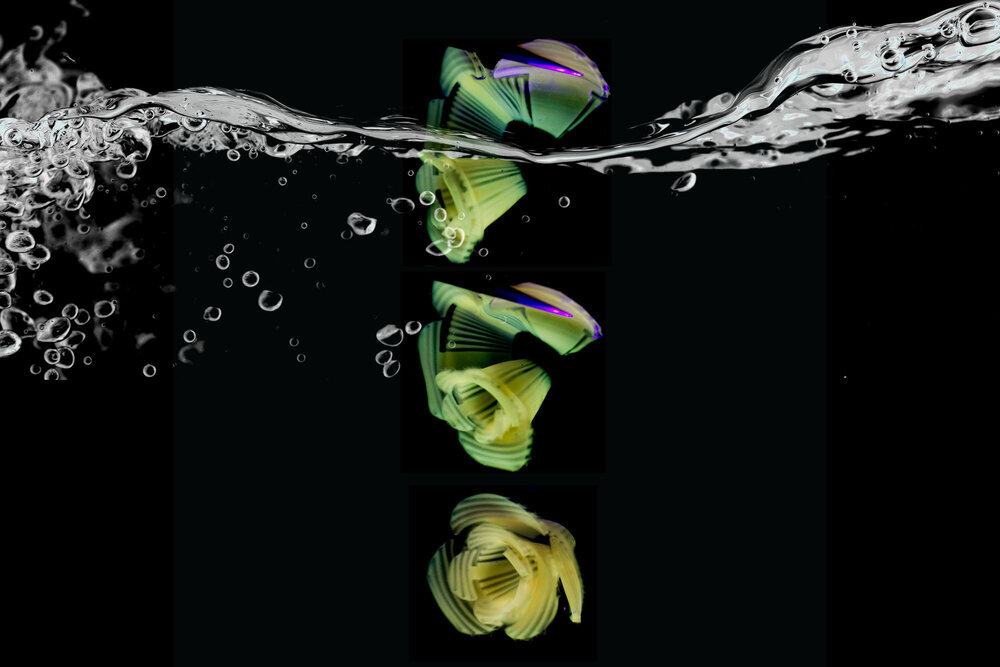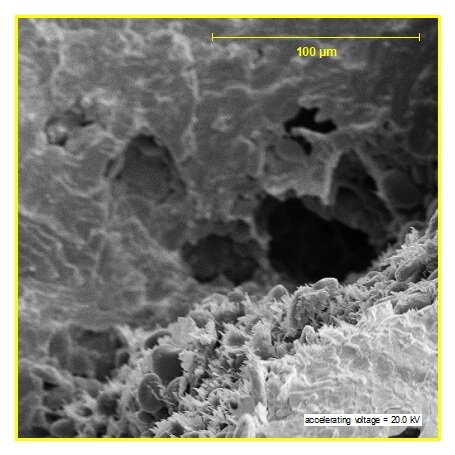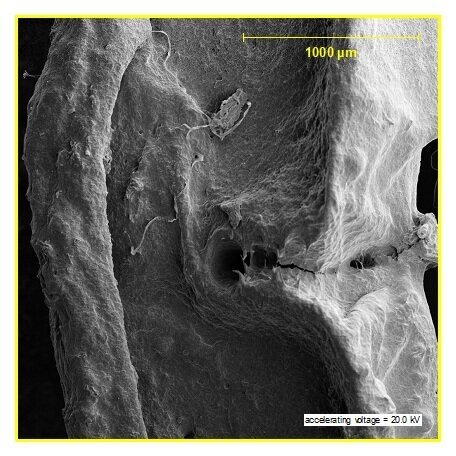
Contribution
materials selectionmicrostructure characterization (SEM)
soft materials fabrication
Collaborators
Ye TaoYi-Chin Lee
Haolin Liu
Humphrey Yang
Jasio Santillan
Supervisor
Lining YaoWen Wang
Teng Zhang
Conducted at Morphing Matter Lab, HCII, CMU
︎ Cover story at Science Advances
Food is an overlooked yet growing field of HCI that democratizes the science and engineering of shape changing and self-folding materials. This project introduces parametric surface grooving as an effective method to morph a variety of materials ranging from flour-based food to elastomers. Here, we investigated how geometrical parameters of grooves can affect swelling ratio, as well as experimentally demonstrated and simulated the multi-stage morphing effect of such structures. This mechanism can be applied to food design and production, and expand the library of 'expansion' of soft materials.
I collaborated with designers and makers in this project. My role is to find alternative materials that justify the generality of our theory, characterize the microstructure of the pasta dough with which we started this project.
For a full description, check out the project page from Morphing Matter Lab.
I collaborated with designers and makers in this project. My role is to find alternative materials that justify the generality of our theory, characterize the microstructure of the pasta dough with which we started this project.
For a full description, check out the project page from Morphing Matter Lab.
Microscopic pasta




The materials exploration turned out well - the groove-based swelling mechanism can be expanded to silicone that is prone to solvent swelling.
Morphing PDMS from Morphing Matter Lab on Vimeo.
